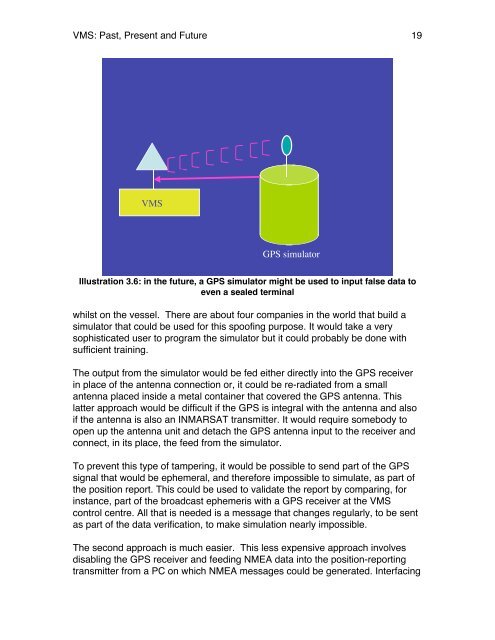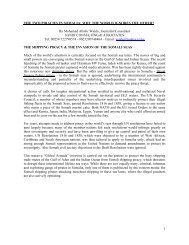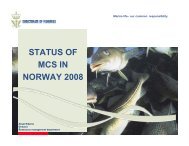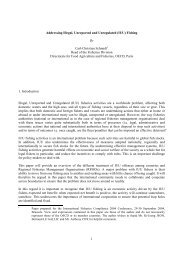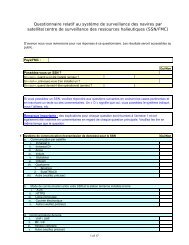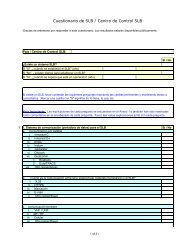Fishing Vessel Monitoring Systems: Past, Present and Future
Fishing Vessel Monitoring Systems: Past, Present and Future
Fishing Vessel Monitoring Systems: Past, Present and Future
Create successful ePaper yourself
Turn your PDF publications into a flip-book with our unique Google optimized e-Paper software.
VMS: <strong>Past</strong>, <strong>Present</strong> <strong>and</strong> <strong>Future</strong> 19<br />
VMS<br />
GPS simulator<br />
Illustration 3.6: in the future, a GPS simulator might be used to input false data to<br />
even a sealed terminal<br />
whilst on the vessel.� There are about four companies in the world that build a<br />
simulator that could be used for this spoofing purpose. It would take a very<br />
sophisticated user to program the simulator but it could probably be done with<br />
sufficient training.<br />
The output from the simulator would be fed either directly into the GPS receiver<br />
in place of the antenna connection or, it could be re-radiated from a small<br />
antenna placed inside a metal container that covered the GPS antenna. This<br />
latter approach would be difficult if the�GPS is integral with the antenna <strong>and</strong> also<br />
if the antenna is also an INMARSAT transmitter. It would require somebody to<br />
open up the antenna unit <strong>and</strong> detach the GPS antenna input to the receiver <strong>and</strong><br />
connect, in its place, the feed from the simulator.<br />
To prevent this type of tampering, it would be possible to send part of the GPS<br />
signal that would be ephemeral, <strong>and</strong> therefore impossible to simulate, as part of<br />
the position report. This could be used to validate the report by comparing, for<br />
instance, part of the broadcast ephemeris with a GPS receiver at the VMS<br />
control centre. All that is needed is a message that changes regularly, to be sent<br />
as part of the data verification, to make simulation nearly impossible.<br />
The second approach is much easier. This less expensive approach involves<br />
disabling the GPS receiver <strong>and</strong> feeding NMEA data into the position-reporting<br />
transmitter from a PC on which NMEA messages could be generated. Interfacing


